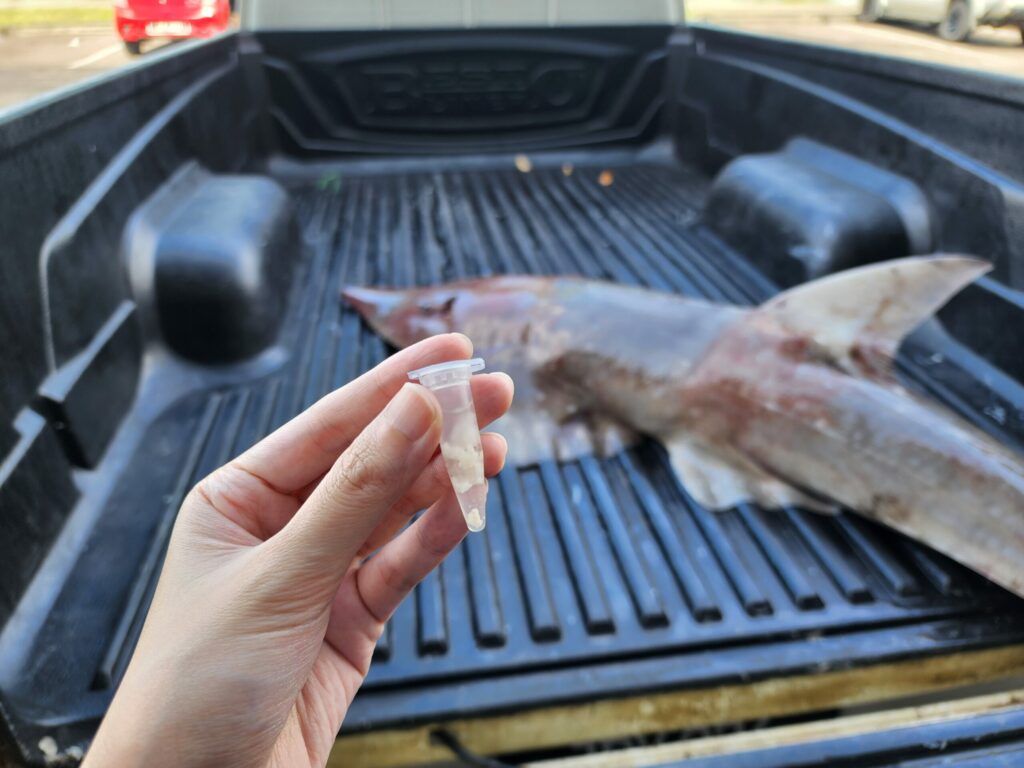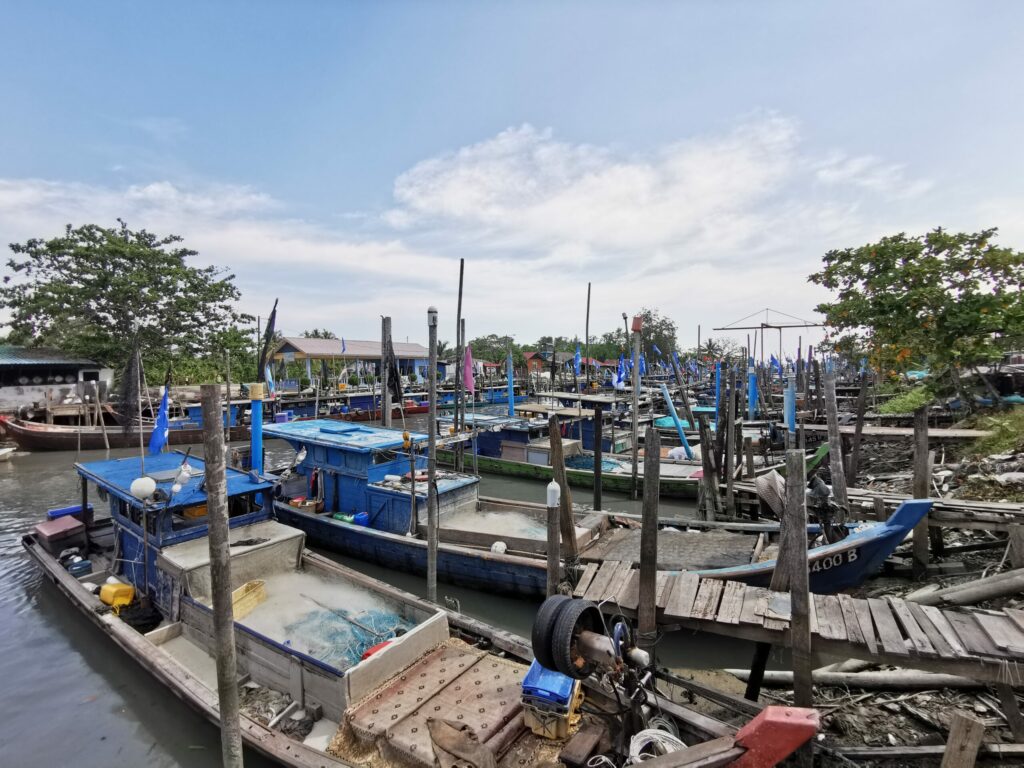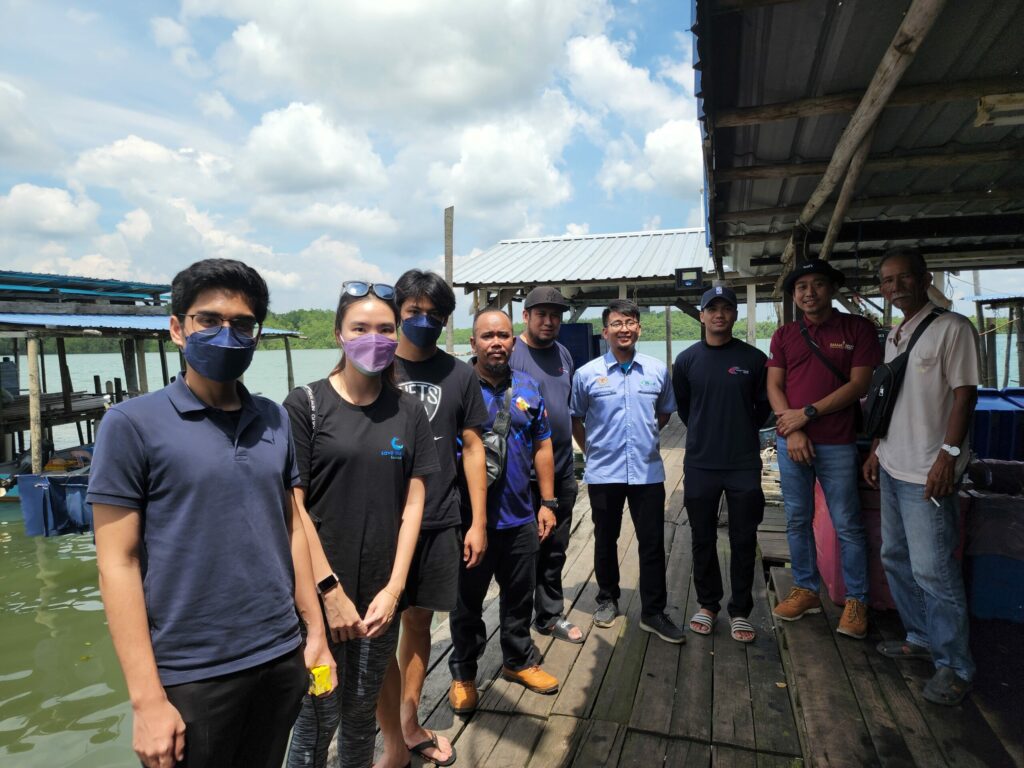Protecting Malaysia’s Bottlenose Wedgefish: Insights and Call to Action
Over the past months, my team members and I embarked on a mission to interview local fishers, collect tissue samples of the bottlenose wedgefish (Rhynchobatus australiae) that are representative of different regions across Malaysia, perform molecular procedures in the laboratory, and analyse the collected data. Now, we have uncovered some important findings on the bottlenose wedgefish in Malaysia that highlight both the urgency and relevant opportunities to protect their future.
Our field survey revealed that R. australiae comprises the dominant species of wedgefish caught from Malaysian waters, alongside at least two other known Rhynchobatus species. Approximately 80% of the R. australiae specimens encountered in fishery landings are juveniles and larger animals are mainly females. The population genetic analyses indicated low genetic diversity in R. australiae populations in Malaysian waters. There is also a significant genetic differentiation among the northern and southern sub-populations within the Strait of Malacca, indicating the presence of a geographical barrier that limits mixing between these two sub-populations. Populations with low genetic diversity and/or exhibit potential isolation through barriers are more vulnerable to threats such as overfishing, habitat degradation and climate change.

Genetic techniques are powerful and effective tools for gaining insights into population structure of endangered species. Photo © Amanda Leung
Interviews with fishers revealed gear-specific fishery practices employed in Malaysia that pose long-term threats to local wedgefish populations. Among the major fishing gears used by local fishers, commercial trawlers are responsible for the highest capture mortality, with more than 50% of caught wedgefish being dead when brought on board. On the other hand, wedgefish captured by other fishing gears such as gillnets, longlines and hook-and-lines are mostly still alive upon landing. Due to considerably high market price for wedgefish (mainly for the valuable fins but also for the tasty meat and increasingly for the snout) that provides welcomed contribution to their income, majority of the fishers retain the wedgefish catch regardless of whether the animals are juveniles or adults.

A reminder to always find balance in fisheries conservation, considering both wedgefish conservation and human approach. Picture taken at Parit Jawa fishing village in Johor, Malaysia. Photo © Amanda Leung
Our study highlights the ongoing threats faced by Malaysia’s bottlenose wedgefish populations using multiple approaches and the urgent need to act before it’s too late! Given the not-insignificant contribution of wedgefish catch to support livelihoods for many fishers that are already reporting challenges in declining catch, implementing new policies and regulations to effectively protect wedgefish will require a lot of effort to promote buy-in within communities. We recommend multi-pronged approach of educating local fishing communities, close collaboration with local government agencies on conservation efforts, and continued research to safeguard their populations. Further research should be given to evaluate socioeconomic trade-offs in gear-specific fishery management interventions that include release of juveniles and mature females.

Building strong ongoing communication with relevant local government agencies is important when conducting field research and accessing fishers for interviews. Photo © Amanda Leung
My supervisor, Assoc Prof Dr. Amy Then Yee Hui, and I are very excited to publish this work in peer-reviewed scientific literature soon! We hope our research results will better inform relevant fisheries management and conservation actions for these endangered animals. Stay tuned!
